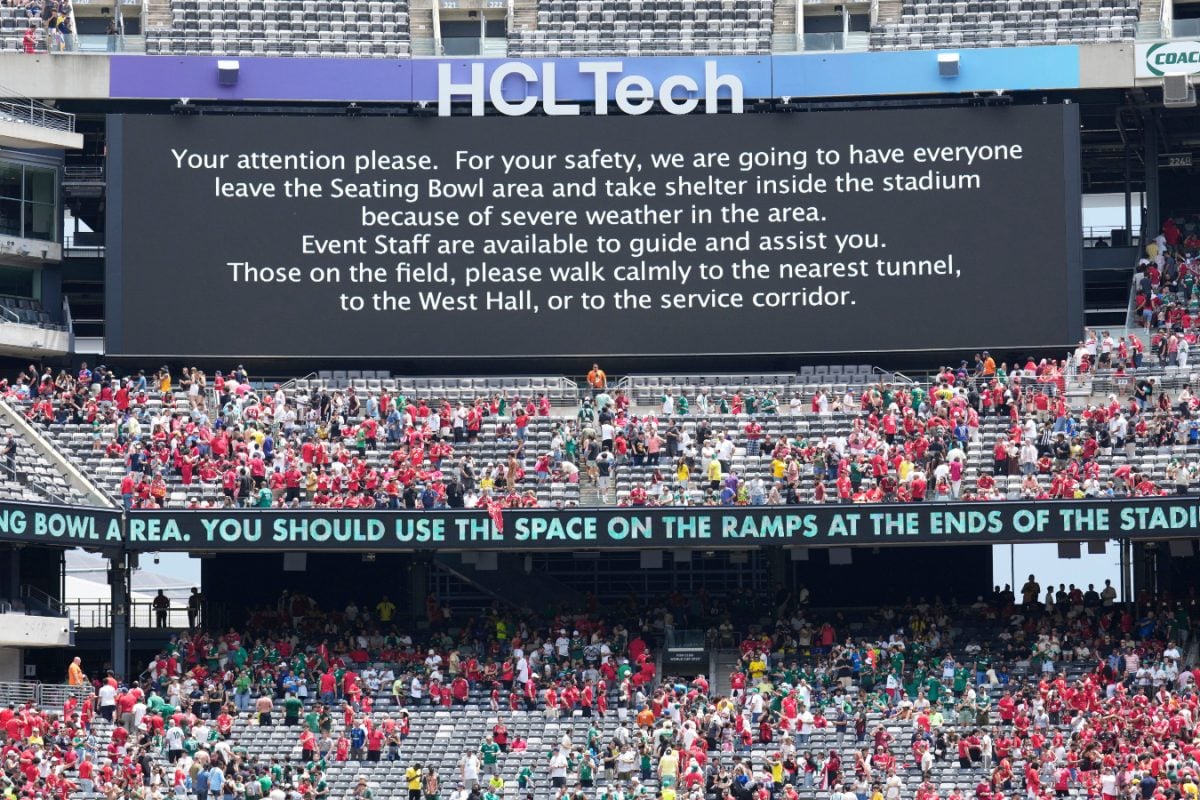

The FIFA Club World Cup 2025, currently underway in the United States, is facing significant challenges due to extreme weather conditions. Both scorching heat and disruptive storms are impacting players, fans, and the overall flow of the tournament, raising concerns about the upcoming 2026 World Cup, which will be held across the United States, Canada, and Mexico.
Across the United States, a brutal heatwave is testing the endurance of players and fans alike. High temperatures and humidity have led to visible signs of distress among athletes, with many struggling to maintain peak performance levels. In Miami, for instance, a match between PSG and Atlético Madrid saw temperatures soaring to 32°C (90°F) with humidity reaching 76%, creating stifling conditions on the pitch. Similarly, in Charlotte, North Carolina, the temperature reached 97 degrees Fahrenheit (36 Celsius) during the game between Bayern Munich and Benfica, further exemplifying the severity of the heat. These conditions are not only physically taxing but also pose serious health risks, including dehydration, cramps, heat exhaustion, and heat stroke, for both players and spectators.
FIFA has implemented measures to mitigate the effects of the heat, such as providing cooling breaks during matches and allowing water bottles in stadiums. Teams are also taking their own precautions, with Borussia Dortmund notably keeping their substitutes in the dressing room during the first half of a game in Cincinnati to avoid exposing them to the blazing sun. Chelsea coach Enzo Maresca even cut short a training session in Philadelphia due to the intense heat. Despite these efforts, the extreme conditions are taking a toll, with players like Atletico's Marcos Llorente describing them as "unbearable".
Adding to the heat-related woes, the tournament has also been plagued by summer storms, causing delays and disruptions to match schedules. Several matches have been interrupted due to lightning and heavy rain. The match between Ulsan and Mamelodi Sundowns in Orlando experienced an hour-long delay, while the Pachuca vs. Salzburg clash in Cincinnati was paused for 90 minutes due to a severe thunderstorm. The Al Ahly and Palmeiras match was also halted mid-field because of stormy weather. These weather-related delays not only disrupt the flow of the tournament but also create logistical challenges for organizers, teams and fans.
The extreme weather conditions have sparked concerns about the suitability of Adidas and Puma kits for the heat. Reports indicate that Nike's Dri-FIT ADV fabric performs exceptionally well under extreme conditions, while Adidas and Puma kits are struggling with breathability issues. Puma's authentic jerseys, using Ultraweave technology, reportedly become saturated with sweat, clinging to players' bodies and appearing like "wet plastic bags."
The challenges presented by the 2025 Club World Cup serve as a stark warning for the upcoming 2026 World Cup. A recent study published in the International Journal of Biometeorology warned of the risks posed by extreme heat at the tournament, citing climate change as a cause of "extreme heat" events that were "more frequent and intense". The study concluded that a majority of the host cities for the 2026 World Cup frequently experience temperatures exceeding safe thresholds for heat stress.
As the Club World Cup continues, organizers are under pressure to ensure the safety and well-being of all participants. The experiences so far highlight the need for careful planning, flexible scheduling, and robust heat management strategies for future tournaments, particularly the 2026 World Cup. Adapting to these increasingly extreme weather conditions will be crucial to ensuring the success and safety of players and fans alike.